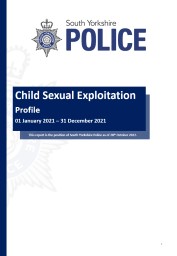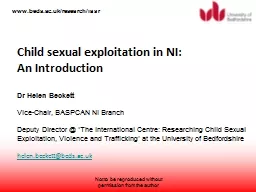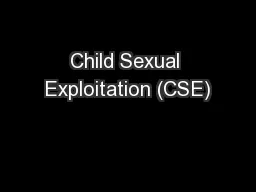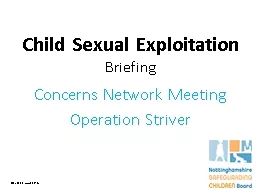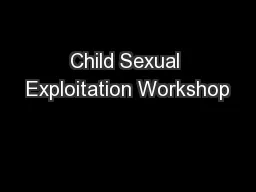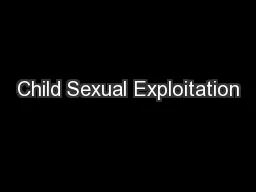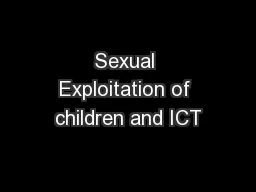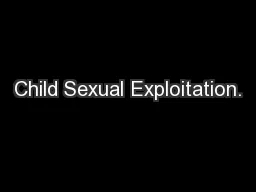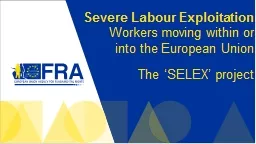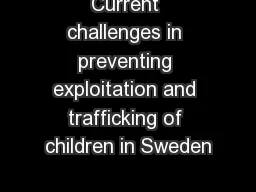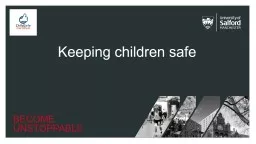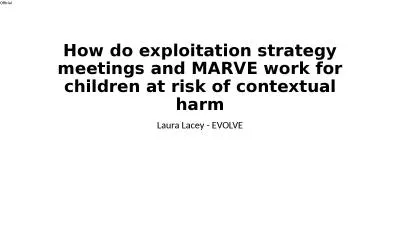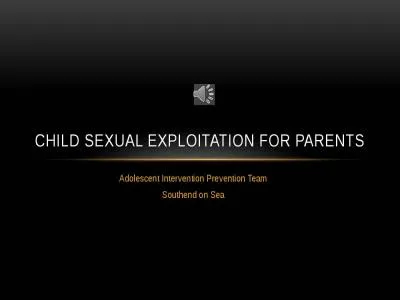PPT-1 Child Sexual Exploitation
Author : daniella | Published Date : 2023-11-16
Profile 01 January 2021 31 December 2021 This report is the position of South Yorkshire Police as of 28 th October 2022 2 Executive Summary South Yorkshire Police
Presentation Embed Code
Download Presentation
Download Presentation The PPT/PDF document "1 Child Sexual Exploitation" is the property of its rightful owner. Permission is granted to download and print the materials on this website for personal, non-commercial use only, and to display it on your personal computer provided you do not modify the materials and that you retain all copyright notices contained in the materials. By downloading content from our website, you accept the terms of this agreement.
1 Child Sexual Exploitation: Transcript
Download Rules Of Document
"1 Child Sexual Exploitation"The content belongs to its owner. You may download and print it for personal use, without modification, and keep all copyright notices. By downloading, you agree to these terms.
Related Documents

